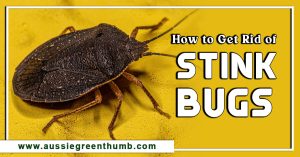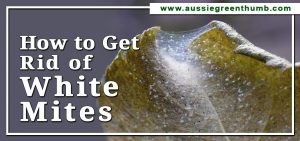Fruit fly infestations can be a pain to deal with. Whether it’s in your home or your garden, these pesky invaders can cause a lot of frustration, especially in the warmer months.
Many growers and garden enthusiasts throughout Australia are looking for effective and safe ways for how to get rid of fruit flies as these pests can cause harm to our precious fruiting plants and vegetables.
It is important we understand each endemic species of fruit fly so we can prevent infestations in our gardens. Here is everything you need to know about Australian fruit flies, how you can prevent them and how to treat infected plants in your landscape.
More...
Introduction to Fruit Flies
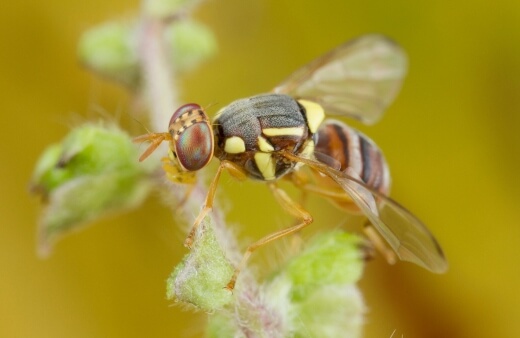
There are over two hundred species of fruit fly in Australia but luckily only two species are common invaders within Australian gardens, both of which attack a wide variety of fruits and some fruiting vegetables.
They are considered the most common fruit pest in Australia and globally, they are some of the most destructive horticultural pests so knowing how to get rid of fruit flies is imperative to your garden’s longevity, appeal and overall health.
When it comes to the fruit fly, prevention is always better than cure. Luckily, there are a few nifty ways in which gardeners can drastically reduce or even snuff out early signs of infestations within their landscapes.
Fruit Fly Species in Australia
Our fruit flies are small to medium-sized flies that form a part of the Tephritidae family and are commonly known as peacock flies thanks to their elaborate and colourful markings.
There are two main families of fruit flies, the other being the common fruit fly family of Drosophilidae, known in Australia as the vinegar fly.
We have two main widespread species of endemic fruit fly that attack plants, namely the Queensland fruit fly, known as Bactrocera tryoni or the ‘Qfly’, and the Mediterranean fruit fly known as Ceratitis capitata or the ‘medfly’.
The Queensland fruit fly is a native insect that can be found in all states of mainland Australia other than Western Australia whereas the medfly affects gardens in Western Australia as well as occurring seasonally in South Australia.
Some certain states and territories restrict the movement of fruit flies to control their spread so be sure to check your local regulations if you’re interested in knowing more.
Identifying Queensland vs Mediterranean Fruit Fly
Queensland Fruit Fly (QFly) Bactrocera tryoni

Occurring predominantly in the eastern states and the Northern Territory, adult flies are usually 6 to 8 millimetres long and appear almost wasp-like. They are reddish-brown with distinctive yellow marks on their abdomens.
The maggots or larvae can reach 7 to 10 millimetres once matured and are a creamy-white colour with pointed heads.
Mediterranean Fruit Fly (MedFly) Ceratitis capitata
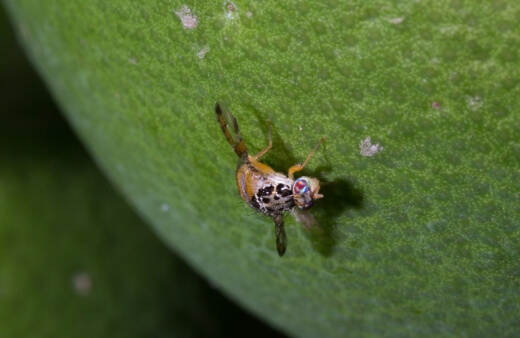
This species of fruit fly is introduced and mainly established in parts of Western Australia. Adults are patterned and colourful, often 3 to 5 millimetres long.
They are light-brown with two lightly coloured rings encircling their abdomens. They have speckled wings and shimmering reddish eyes. The larvae or maggots are white and can grow to around 8mm long.
Difference in Movement
The main significant difference between these two species apart from their appearance is that the Medflies do not cover much distance or move very far.
They usually travel within a 50-metre radius whereas the Q-flies can travel over 10 times that distance. This is why the Q-fly has also become a serious pest for commercial crops as well.
Eggs & Pupa
Fruit fly eggs can usually be found underneath the skin of infested fruits. They are translucent white and about 1 mm in length with a curved shape.
Pupae are small brown cylindrical capsules that reach around 4 mm in length, also normally found within fruits.
Fruit Fly Lifecycles
Female flies will lay their eggs (around 500 eggs per batch) in ripened host fruits to begin the new lifecycle by stinging their eggs into the fruit. The larvae will then hatch from their eggs and burrow inside the fruits to feed on the pulp, stimulating their growth.
Once matured, the larvae will chew through the skin of the fruit and drop down to the ground where they then pupate in the nearby soil.
Adult flies will break through their cases when ready and burrow up from the soil ready to start the next generation. The entire lifecycle of fruit flies can be concluded in only four weeks in warmer, moister conditions.
In cooler regions, the cycles can take up to about 4 months. Fruit fly activity will normally be at its highest during late summer but can last from spring to autumn in warm regions.
Plants Affected by the Fruit Fly
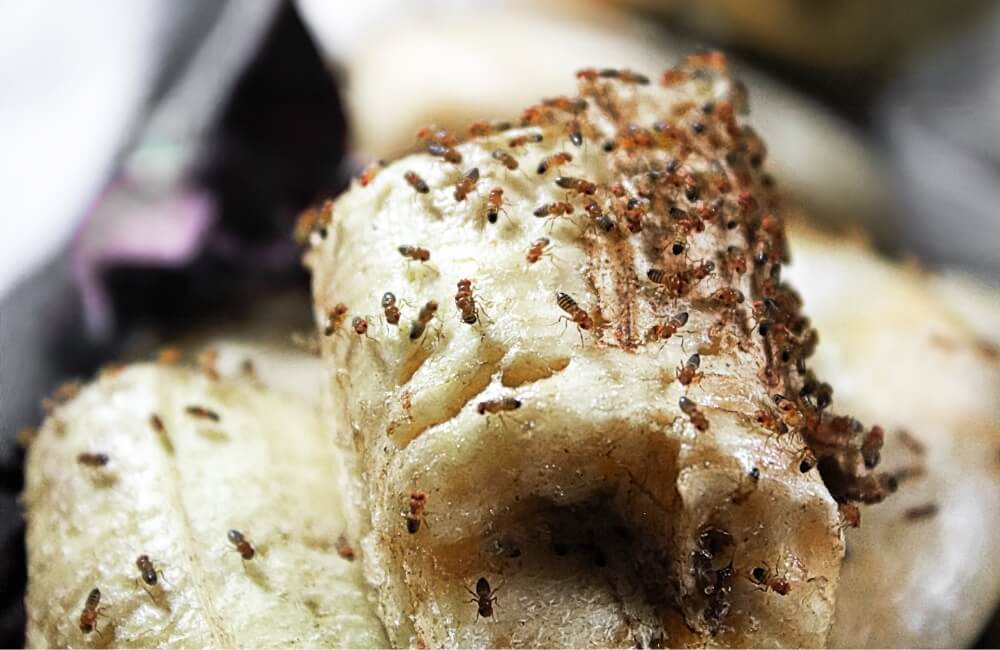
Both species of Australian fruit fly are known to attack and infest many fruits, both tropical and seasonal, as well as some fruiting vegetables.
If you’ve worked hard to grow and construct a veggie garden or luscious landscape with some fruiting plants, whether native or imported, it can certainly be disheartening if fruit flies begin spoiling your crops.
Here are some of the common plants that are affected by fruit fly infestations:
Citrus Plants
- Lemons
- Limes and Finger lime trees
- Oranges
- Cumquats
Stone Fruits
- Apricots
- Peaches
- Plums (including natives like Kakadu Plum or Davidson’s Plums)
- Nectarines
Tropical Fruits
- Banana - comprehensive guide on how to grow bananas
- Avocado - how to grow avocados in Australia
- Guava
- Mangoes - how to grow a mango tree.
- Pomegranates
- Strawberries and other berries
- Loquats
- Figs
- Passionfruit
Pome Fruits
- Apples
- Pears
- Quinces
- Nashi
Fruiting Vegetables
- Eggplant - refer to our complete growing and care guide for eggplants here
- Tomatoes
- Australian bush tomatoes - here is our list of the best bush tomatoes to grow in Australia
- Capsicum - check out our in-depth guide to growing capsicums here.
How Fruit Flies Affect Plants
While these pesky critters don’t do any direct damage to plants and foliage, they do feed on decaying organic matter which means our fruits and crops can be massively compromised. The larvae will feed on the fruit or vegetable rendering it unusable.
Fruit flies are also known to produce at a rapid rate so if not controlled, they can reach almost unmanageable numbers within gardens and crops.
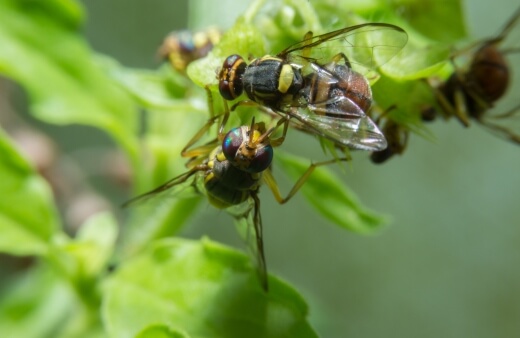
Identifying Symptoms of Infested Fruits
Common Symptoms of Fly Damage to Fruits
- Small stings or pinprick holes in fruits, usually visible from the outer skin of ripened fruits.
- If you notice your fruits are dropping too early, they are more than likely infested with flies.
- If you gently break open the fruit, you will be able to see the larvae or maggots in infected fruits.
- Rotting fruit can also be a common symptom of fruit fly infestation. This is usually a secondary infection caused by the larvae feeding within the fruits. You will notice bruising skin followed by skin rot forming on the fruits.
Depending on where you live, you may need to collect the maggots you find and seal them in a plastic bag or container then report them to eradicate an outbreak in your area.
Be sure to look for your local fruit fly hotline if you need to report any suspicious fly activity.
Common Causes of Fruit Flies
Unfortunately, if you grow a fruiting plant or vegetable, you are susceptible to fruit fly invasions, especially in the high-activity regions mentioned earlier. They can also be attracted to drains, garbage disposals, trash bags and empty cans.
Essentially, anything that could be harbouring food waste in a moist environment is at risk. Fermenting fruits do seem to be the favourite for breeding though.
By creating the cleanest possible environment around your home and garden, you can already void many of the possible breeding locations and limit the outbreak in your landscape.
How to Prevent Fruit Fly Infestations
There are a few ways in which you can aim to prevent fruit flies from spoiling your fruit or vegetable yields. Some require a small investment in materials whereas others can be more DIY solutions.
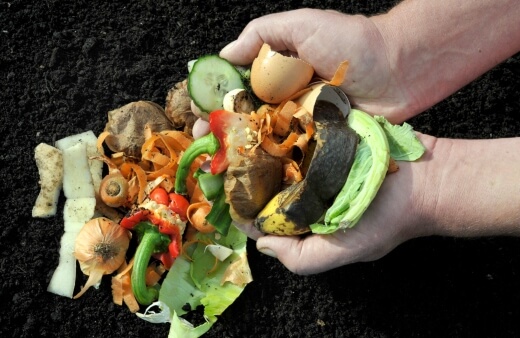
Here are some ways you can help prevent fruit flies in your garden:
- Pick ripened fruits as soon as possible to eliminate as many breeding sites as you can. Females will only start laying eggs into fruits that are fermenting.
- Be sure to stick to a healthy pruning routine to make the harvesting of your fruit as manageable as possible.
- Be sure to always pick up fallen fruits and dispose of them off-site in a plastic bag. This can drastically help in reducing fruit fly numbers.
- You should always consistently compost any organic materials in your garden. This will deter flies and also give you good, organic compost for your other vegetation.
See our compost bin buying guide and product reviews to make composting in your garden more efficient. - You can cover your maturing fruits with paper or fine mesh cloth exclusion bags to help the fruits from being stung by female flies.
- You can also just cover your whole tree or plant in exclusion netting or insect-proof netting to protect all the fruits from flies. The weave in the netting should be about 2mm x 1mm to securely protect fruits.
You may even need to stake the netting to ensure it is not sitting directly on fruits otherwise the female flies may still be able to reach and sting the fruits through the cover. - Perhaps fruit flies are breeding in an old fruiting plant that you may not even want anymore. If such a tree or plant exists in your landscape, you can consider removing it altogether and replacing it with an ornamental plant that won’t offer a breeding location for flies.
Controlling and Treating Fruit Flies: How to Get Rid of Fruit Flies

Even if you are not able to fully prevent fruit flies from breeding in your garden, you can still control their spread to minimise the impact on your vegetation.
Unfortunately, in some areas, total prevention can be difficult as this usually requires a full neighbourhood awareness and effort between you and all the surrounding households.
Here are some ways you can help to control infestations and their spread:
- Closely monitor your fruiting plants and vegetables, especially once spring starts. Look for any signs of nearby flies or even rotting fruits. The earlier you begin treatment, the better for reducing the number of flies.
- If you notice any fly activity, it would be best to install a commercial fruit fly trap near your plants to lure and catch them before they can lay eggs in ripe fruits later in the season.
Be sure to look for a fruit fly trap that can catch both males and females for the best results. Other great alternatives are protein bait sprays and traps. - If infestations become a little more severe, you may need to consider using a stronger chemical control method like an appropriate insecticide for fruit flies. Be sure to research the best available products in your area.
- You can also make your own lure trap at home as this is a more safe and more organic control method. There are many useful and effective bait recipes available online that you can try mixing up at home to create your lure traps.
A good option for a homemade fruit fly trap contains 80g white sugar, 2g dry brewer’s yeast and 920ml water. Vinegar-based solutions also work well. Try mixing some apple cider vinegar and dish soap then place that outside in a tall glass or jar. - Lastly, you can allow natural predators of fruit flies to establish themselves in your garden to further decrease fly numbers.
Bugs like assassin bugs, mantids and spiders commonly eat adult fruit flies. Some beneficial wasp species will also feed on adult flies. - If all else fails, you might need to destroy all infested fruits to prevent new generations of flies from appearing. Be sure to also chat with your immediate neighbours and encourage them to be as diligent as you to prevent the spread in your area.
Remember, these pests fly so they can easily breed next door and still be a problem for you.
Fruit Fly Frequently Asked Questions
Will fruit flies go away on their own?
Unfortunately, infestations will rarely go away on their own and will most likely get worse over time. Even if the adults die, new fruits will continuously lure new flies to the area to lay eggs.
What is the lifespan of a fruit fly?
Adult fruit flies only tend to live for 8 to 15 days where they will try to mate as much as possible to ensure the next generation.
Why do I have fruit flies in my garden?
If you have fruit flies in your garden, it should be a sign that you need to clean up decaying materials and compost them more frequently to reduce breeding sites.
If you have fruiting trees in your landscape, consider planting flowering groundcovers between the trees to attract natural fly predators like ground beetles.
Can you eat fruit that fruit flies have been on?
Despite the factor of disgust, it is safe to accidentally consume fruit flies or fruits that have been touched by fruit flies. There are no specific medical illnesses associated with this.
In meek to mild cases, cut away any spoiled fruit and consume the safer sections. In severe cases of maggots or rotting fruits, it is best to avoid consuming the produce.
Looking for more natural and organic pest control for your garden? Be sure to check out our other informative guide below for more information:
Protect Your Plants from Fruit Fly Invasions Using Our Gardening Guide
We hope you have a better understanding of how to identify, prevent and treat any fruit fly infestations in your garden. There’s nothing quite as frustrating as putting in so much effort to yield abundant crops only for these pesky pests to quickly and quietly invade our beloved fruits and vegetables.
Now that you have some effective methods on how to get rid of fruit flies within your landscape, you can be assured your future crops will be more protected and prolific. Get the most from your garden this spring by controlling fruit fly infestations as effectively as possible.
Published on September 9, 2022 by Gary Clarke
Last Updated on October 25, 2023

